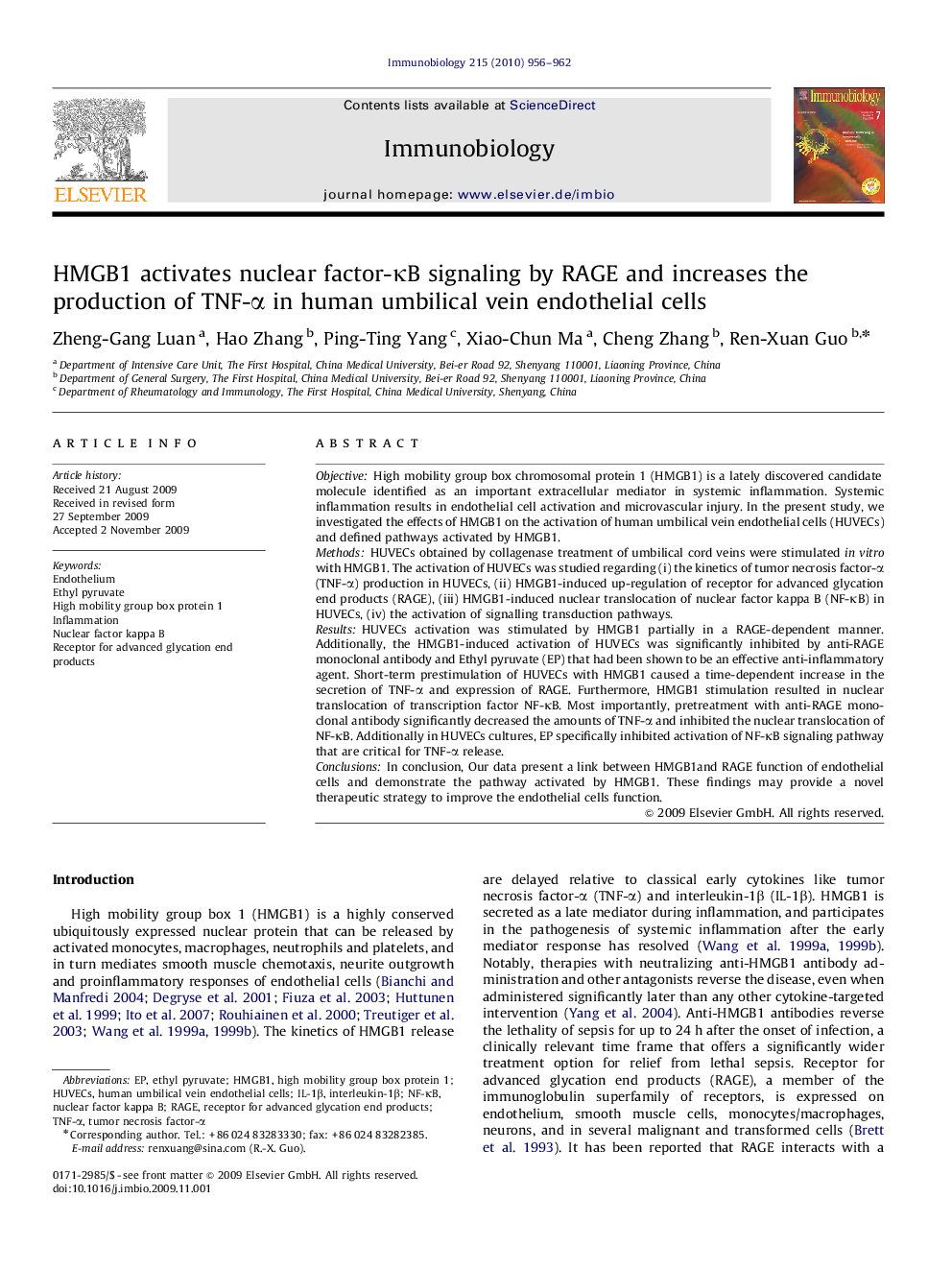| کد مقاله | کد نشریه | سال انتشار | مقاله انگلیسی | نسخه تمام متن |
|---|---|---|---|---|
| 2183752 | 1095588 | 2010 | 7 صفحه PDF | دانلود رایگان |

ObjectiveHigh mobility group box chromosomal protein 1 (HMGB1) is a lately discovered candidate molecule identified as an important extracellular mediator in systemic inflammation. Systemic inflammation results in endothelial cell activation and microvascular injury. In the present study, we investigated the effects of HMGB1 on the activation of human umbilical vein endothelial cells (HUVECs) and defined pathways activated by HMGB1.MethodsHUVECs obtained by collagenase treatment of umbilical cord veins were stimulated in vitro with HMGB1. The activation of HUVECs was studied regarding (i) the kinetics of tumor necrosis factor-α (TNF-α) production in HUVECs, (ii) HMGB1-induced up-regulation of receptor for advanced glycation end products (RAGE), (iii) HMGB1-induced nuclear translocation of nuclear factor kappa B (NF-κB) in HUVECs, (iv) the activation of signalling transduction pathways.ResultsHUVECs activation was stimulated by HMGB1 partially in a RAGE-dependent manner. Additionally, the HMGB1-induced activation of HUVECs was significantly inhibited by anti-RAGE monoclonal antibody and Ethyl pyruvate (EP) that had been shown to be an effective anti-inflammatory agent. Short-term prestimulation of HUVECs with HMGB1 caused a time-dependent increase in the secretion of TNF-α and expression of RAGE. Furthermore, HMGB1 stimulation resulted in nuclear translocation of transcription factor NF-κB. Most importantly, pretreatment with anti-RAGE monoclonal antibody significantly decreased the amounts of TNF-α and inhibited the nuclear translocation of NF-κB. Additionally in HUVECs cultures, EP specifically inhibited activation of NF-κB signaling pathway that are critical for TNF-α release.ConclusionsIn conclusion, Our data present a link between HMGB1and RAGE function of endothelial cells and demonstrate the pathway activated by HMGB1. These findings may provide a novel therapeutic strategy to improve the endothelial cells function.
Journal: Immunobiology - Volume 215, Issue 12, December 2010, Pages 956–962